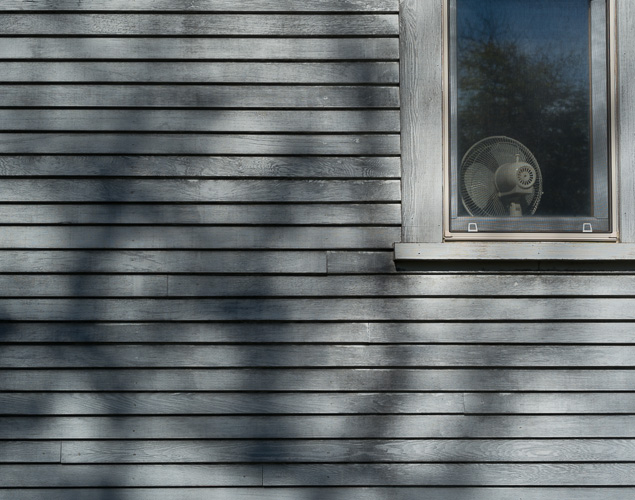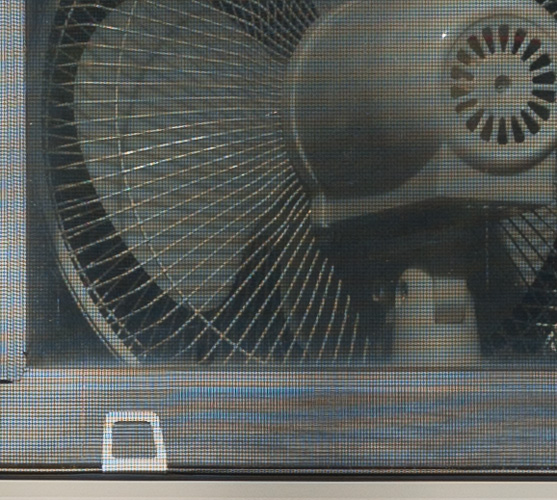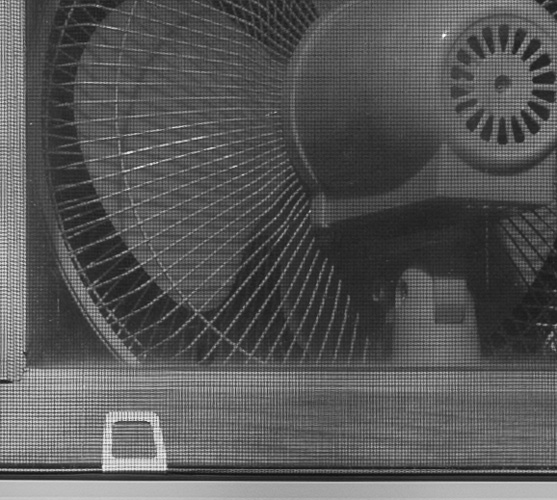Moire
I’ve been making images for a year with the D800E, and moire is almost never a problem. With no anti-aliasing filter, cameras like the D800E and the M240 tend to have more moire as the pixels get larger and the lenses get sharper. The M240 has a 6 micron pixel pitch compared to the D800E’s 4.88 micron. The Nikon lenses are pretty darned good, but the three Lcica lenses I used on the trip are spectacular. So I thought that moire might be an issue.
It wasn’t. There was only one image where I saw it. Here’s the overall image in color, although my final result is B&W:
Window and Shadows, Yarmouth, Nova Scotia. 50mm ‘lux, f/8 @ 1/500, ISO 200
And here’s the section with some moire at 1:1:
Here’s what the problem area looks like after conversion to B&W:
If I wanted a color result, it would be fairly easy to selectively desaturate the moire. And this is one image out of a couple of thousand.
I’m now a believer in ditching the anti-aliasing filter on full frame cameras with 24 megapixel resolution or greater. By the way, note the microcontrast the 50 Summilux provides, and this is with Lightroom’s default sharpening.



Leave a Reply